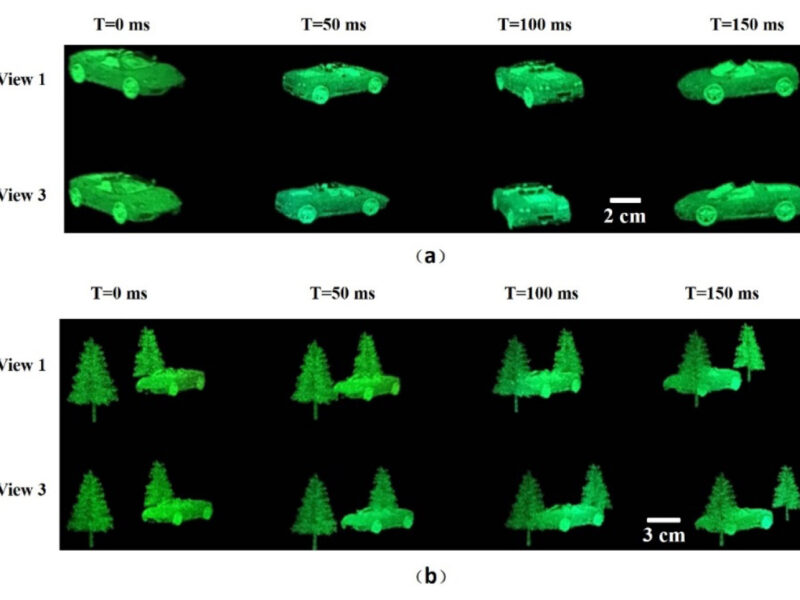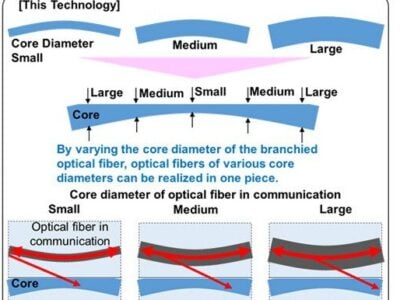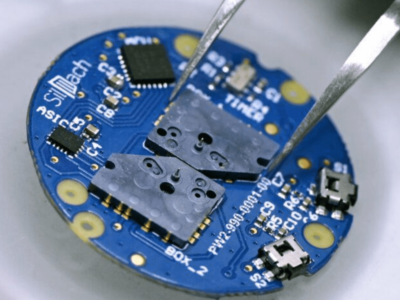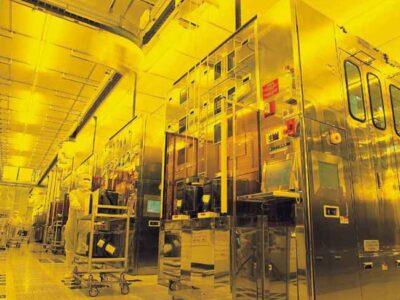
LCD-based holographic displays in the making
Their approach to portable holography is to drastically reduce the computational requirements of refreshing 3D video data by separating the phase information of a lightfield from the amplitude information. Instead of relying on parallax barriers or thin film micro lenses to create stereoscopic multi-views, the researchers rely on a fixed array of voxel-forming nanogratings coupled to an LCD plane used as the light amplitude modulator.
Published in the Optics Express journal, their paper “Multiview holographic 3D dynamic display by combining a nanograting patterned phase plate and LCD” prove the concept with a 640×360 resolution four-view display. Here, each addressable pixel of the 5.5 inch TFT-LCD used to modulate the amplitude information of a lightfield is matched with a nanograting from the fixed 4-view phase plate affixed to the LCD.

With the help of SVG Optronics and a specially devised lithography system, the researchers were able to manufacture diffractive gratings with a period tuneable in steps as small as 1nm. The period and orientation of the nanograting in each of the 4-pixel nanogratings were carefully calculated following holographic recording and readout theory, so that the transmitted light beam converged to four viewing points.
Made out of glass, the phase plate was patterned using a homemade lithography system and positive photoresist. It consisted of nanogratings with a period varied from 550nm to 1000nm. The size of each pixel in the phase plate was 50×65μm, slightly smaller than the 95μm pixel size of the LCD so it would provide an alignment tolerance between the phase plate and the LCD. With each of the nanograting sub-pixels matching one pixel of the LCD, the 4-view phase plate had a total of 1280×720 pixels and the resolution of each view was 640×360.

In effect, each image transmitted through the stack using a collimated incident beam was modulated by the phase plate, with the nanogratings re-directing the emergent beam to the four viewing points as initially computed. In principle, the same concept could be applied with many more views (sub-pixels) all fixed as nanogratings whose periods and orientations are carefully computed once for all to generate a fixed number of views. Here the phase plate acts optically as a computational shortcut for all subsequent views that could be computer-generated (only with the light modulation information needed to drive the LCD display).
The researchers measured an angular divergence of only 1.02 degrees on average, slightly larger than the diffraction limit of 0.94 degrees. In their experiments, the researchers used a green collimated laser as their light source and were able to display real-time 3D video without ghost image or crosstalk. In the same paper, the researchers also reported 64-view 3D static images with 50º of field of view (FOV) by only using a binary mask.

They expect to be able to increase the resolution of the stereoscopic images and the refreshing rate through the use of a higher performance spatial light modulator. As future work, the researchers also envisage the use of collimated illumination through a waveguide (which could more easily transfer to mobile integration), and the integration of RGB colour filters to achieve full colour holographic video.
Visit SVG Optronics at www.svgoptronics.com
Visit Soochow University at https://eng.suda.edu.cn
Related articles:
32K OLED resolution in demand for holographic smartphones
Holographic smartphone created in China wins 2015 CES Innovations Award
Smartphone protective case delivers 3D content
 If you enjoyed this article, you will like the following ones: don't miss them by subscribing to :
eeNews on Google News
If you enjoyed this article, you will like the following ones: don't miss them by subscribing to :
eeNews on Google News



